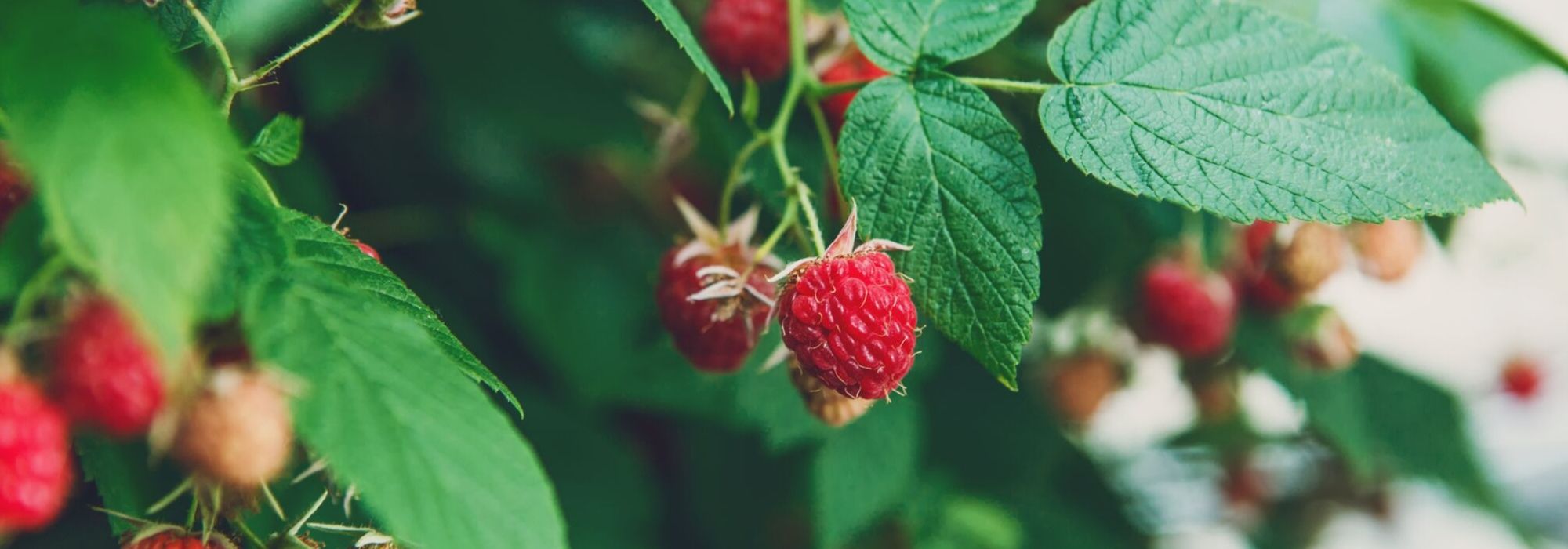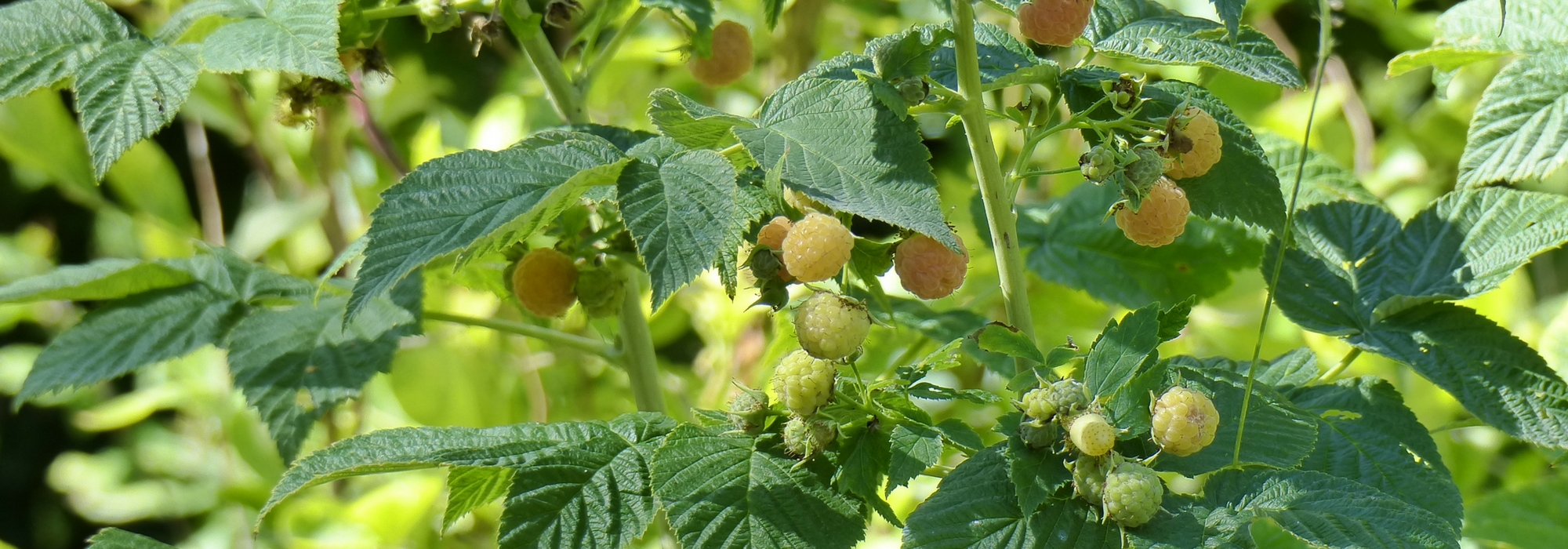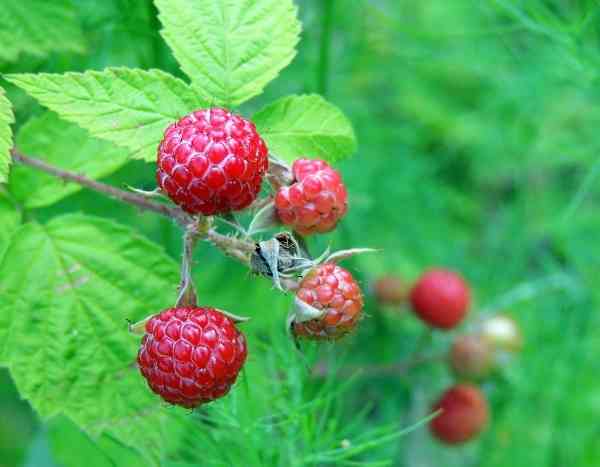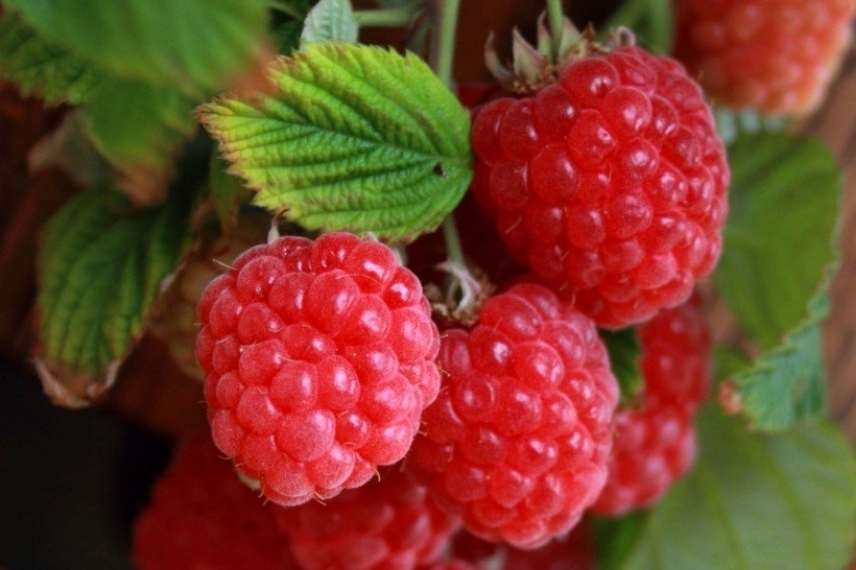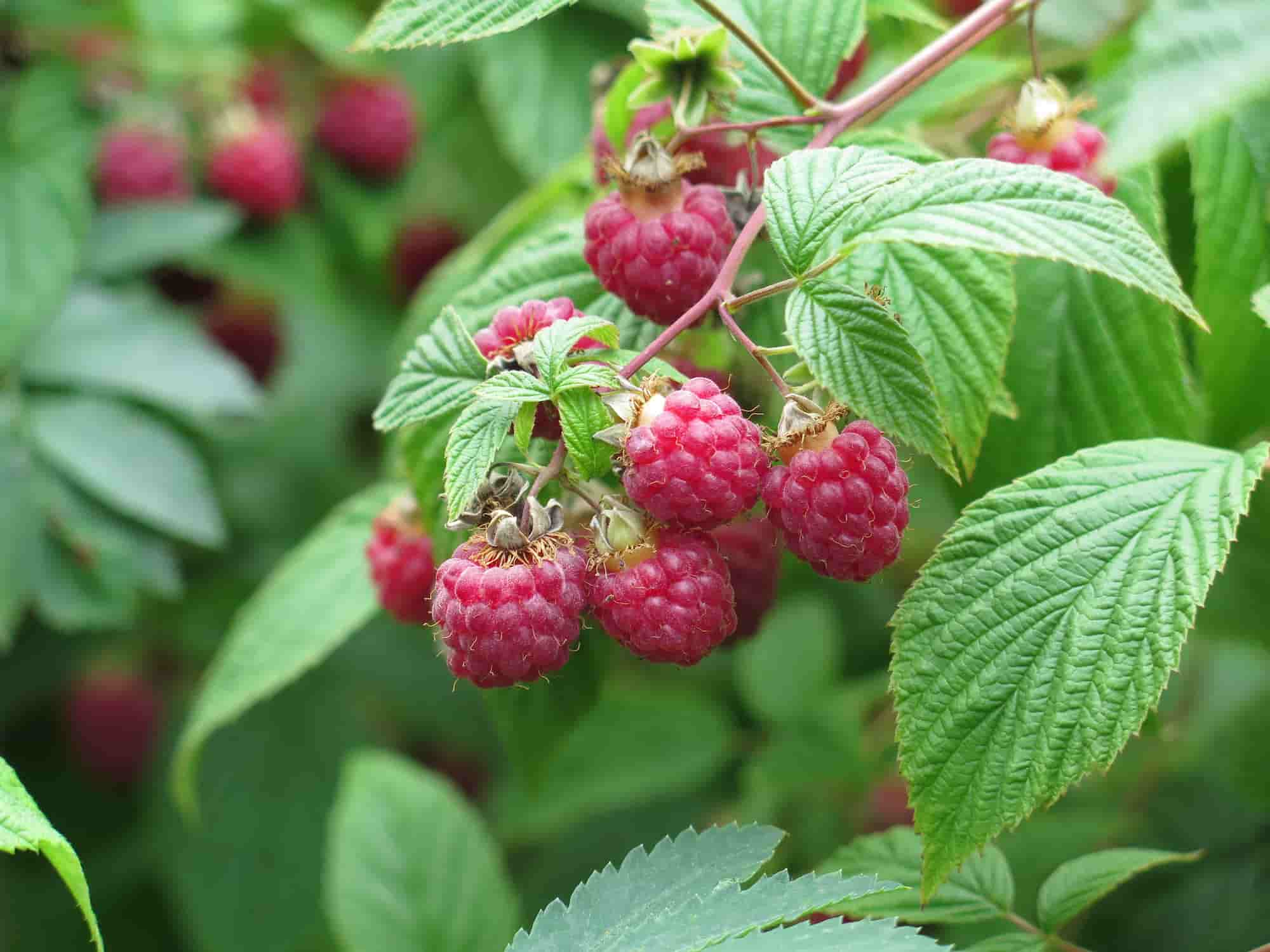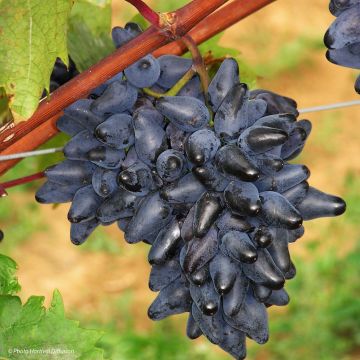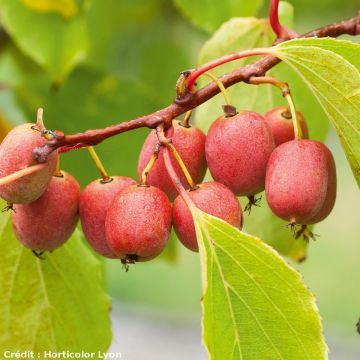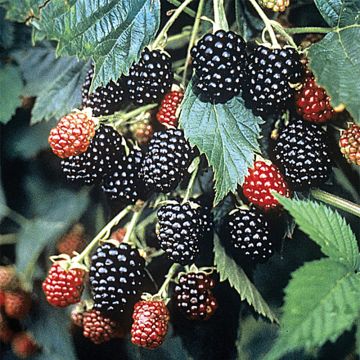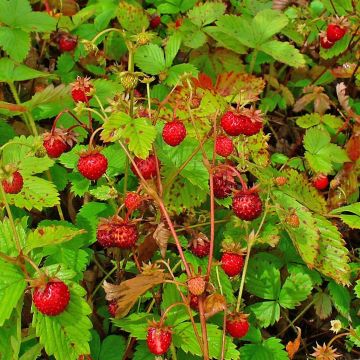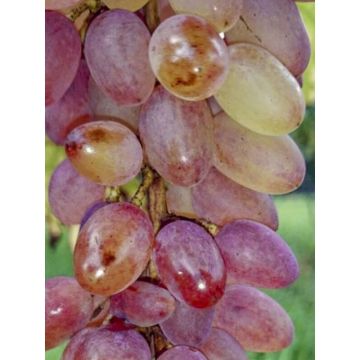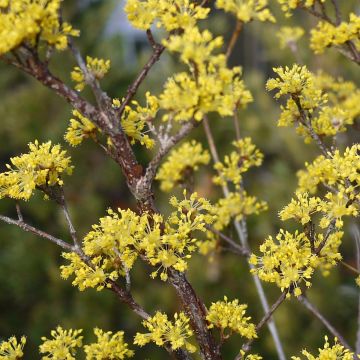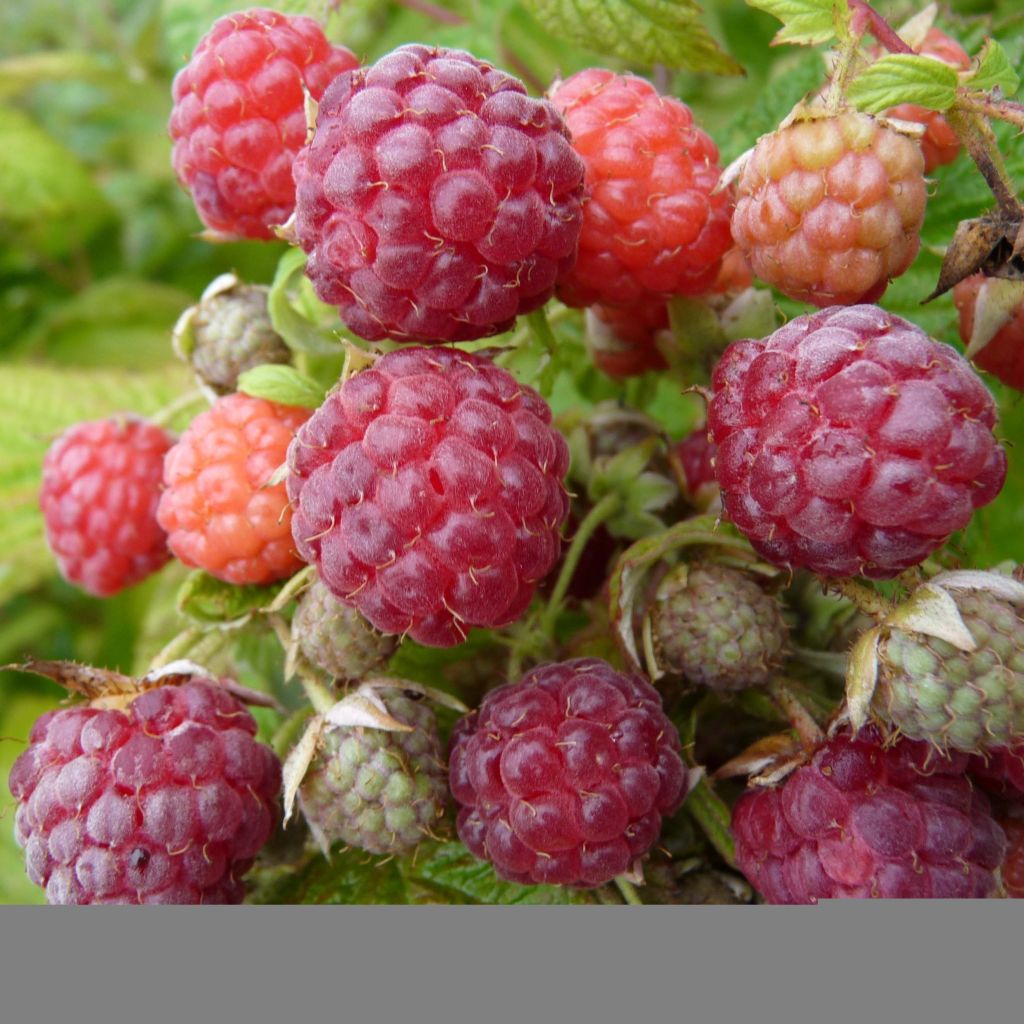

Framboisier Blissy ou Autumn Bliss (remontant) Bio
Organic Raspberry Blissy or Autumn Bliss (Everbearing) - Rubus idaeus
Rubus idaeus Blissy
Raspberry, Red Raspberry, European Raspberry
Conforme au produit, plant Correct
Françoise , 11/03/2023
Special offer!
Receive a €20 voucher for any order over €90 (excluding delivery costs, credit notes, and plastic-free options)!
1- Add your favorite plants to your cart.
2- Once you have reached €90, confirm your order (you can even choose the delivery date!).
3- As soon as your order is shipped, you will receive an email containing your voucher code, valid for 3 months (90 days).
Your voucher is unique and can only be used once, for any order with a minimum value of €20, excluding delivery costs.
Can be combined with other current offers, non-divisible and non-refundable.
Home or relay delivery (depending on size and destination)
Schedule delivery date,
and select date in basket
This plant carries a 6 months recovery warranty
More information
We guarantee the quality of our plants for a full growing cycle, and will replace at our expense any plant that fails to recover under normal climatic and planting conditions.

Description
The Autumn Bliss Organic Raspberry (also known as Blissy) is an old variety known for its robustness, disease resistance, and ease of cultivation. The bush, not very tall, does not need to be trained and it offers an abundance of fruits from late August until the first frost, with peak production in September. Its large-sized raspberries have a flavourful and sweet taste that will delight enthusiasts. They can be stored for a few days after picking in a cool place. Planting is done from October to March in deep garden soil, well loosened and enriched, with not too much limestone, remaining moist even in summer.
To fully enjoy their flavour, raspberries should be consumed quickly after picking, as they do not keep for a long time. If you have a bountiful harvest, consider making coulis, sorbets, ice creams, pies, or jams. You can also freeze them.
Production reaches its normal level in the third year after planting. One plant can produce fruits for around 10 years. There are two types: remontant or everbearing varieties, producing in autumn (generally from August to October) and then again in June of the following year, and non-remontant or summer bearing varieties, with abundant harvests in June-July. 'Autumn Bliss' is a variety with upright canes, adorned with small prickles, rather low, naturally resistant to phytophthora.
The Raspberry is a deciduous shrub with upright stems, forming a bush of 1m (3ft) to 1.50 m (5ft) in all directions over time, depending on the varieties. The stems or canes are biennial, each having the peculiarity of dying after fruiting. Every year suckers emerge from its roots, producing new canes armed with small, mildly prickly thorns. The Raspberry has leaves that are green on the top, white-green and hairy on the underside. The flowering is very nectar-bearing. The white flowers are small (1 to 2 cm (0 to 1in) in diameter), grouped in small clusters of 10 to 12, and appear in spring and summer. The fruits are formed by small agglomerated drupes, easy to detach when ripe.
The Raspberry belongs to the Rosaceae family, like strawberries, blackberries, and wild roses. Wild raspberries are native to Europe and temperate Asia, where they grow in cool climates alongside elderberry, beech, or rowan, especially in mountainous undergrowth, but also in the plains.
Organic Raspberry Blissy or Autumn Bliss (Everbearing) - Rubus idaeus in pictures
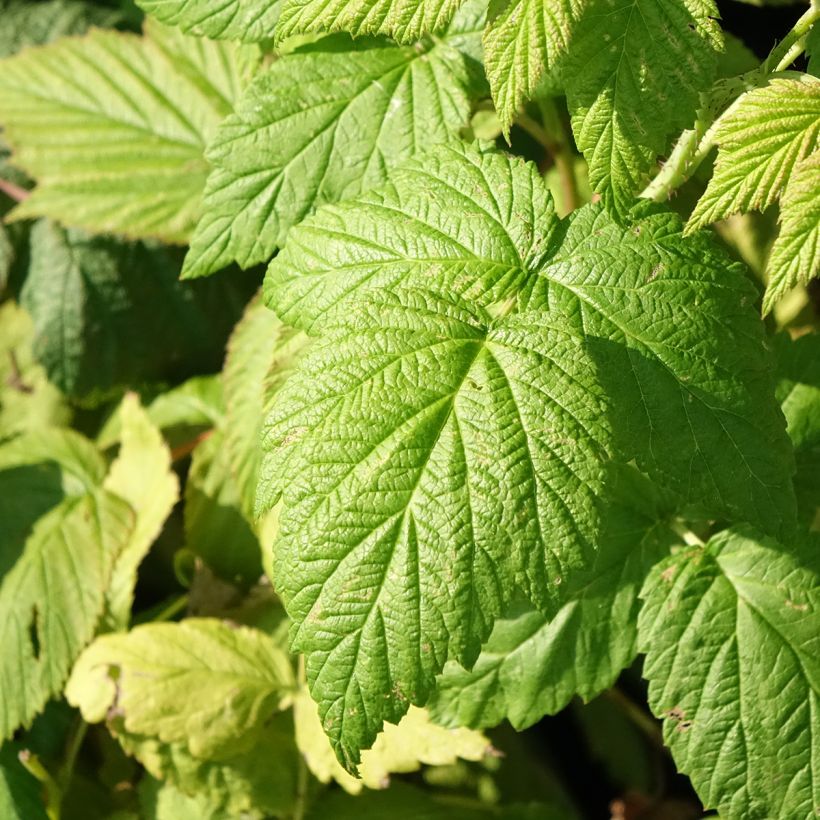

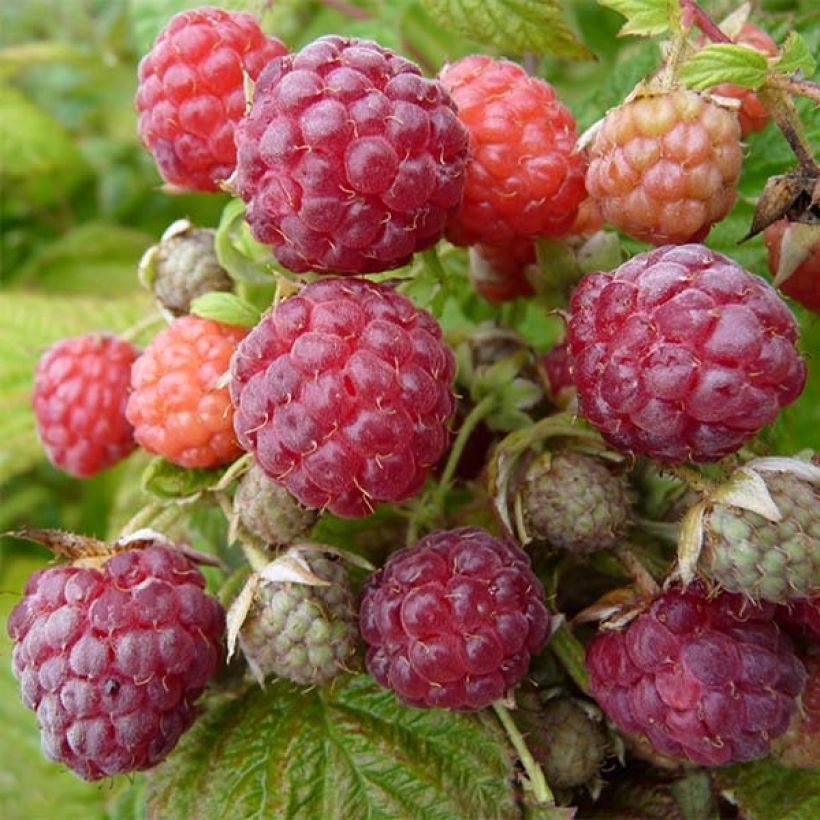

Plant habit
Fruit
Flowering
Foliage
Botanical data
Rubus
idaeus
Blissy
Rosaceae
Raspberry, Red Raspberry, European Raspberry
Cultivar or hybrid
Planting and care
The Autumn Bliss or Blissy Organic Raspberry prefers humiferous, rich soils that retain moisture, even in summer, without too much limestone. It appreciates partially shaded but bright exposures. In cooler regions it will tolerate the sun well, while in the warmer south, it will prefer partial shade. Plant it from October to March in ordinary soil enriched with compost and well-rotted manure.
Install the plants every 80 cm (32in) in rows spaced 1.50 m (5ft) apart. During planting, the collar should be level with the ground. It is advisable to train them with wire between stakes or on a trellis.
Water regularly to promote root growth in the first year of planting. During periods of high heat or prolonged drought, provide additional water. Weed the surface, especially at the beginning of planting, and apply mulch to retain moisture in summer.
The Raspberry can be susceptible to various diseases if the growing conditions are not optimal (raspberry anthracnose, raspberry rust, powdery mildew, grey rot in rainy periods, or Botrytis). The damage observed in cultivation is due to poor climatic conditions, especially during cold springs that allow micro-fungi present in the soil to infest the vegetation. To protect the plants, it is recommended to fertilise raspberries with organic fertilisers that promote the multiplication of anaerobic bacteria in the soil, which strengthens the soil's ability to stimulate the plants' immune system. Raspberries can also be attacked by certain parasites such as raspberry worms, the larvae of a small beetle that lodges in the fruits without causing significant damage.
Raspberries can easily multiply through suckers that grow near the base: remove them and transplant them to another location in the garden if desired.
Planting period
Intended location
Care
Planting & care advice
-
, onOrder confirmed
Reply from on Promesse de fleurs
Similar products
Haven't found what you were looking for?
Hardiness is the lowest winter temperature a plant can endure without suffering serious damage or even dying. However, hardiness is affected by location (a sheltered area, such as a patio), protection (winter cover) and soil type (hardiness is improved by well-drained soil).

Photo Sharing Terms & Conditions
In order to encourage gardeners to interact and share their experiences, Promesse de fleurs offers various media enabling content to be uploaded onto its Site - in particular via the ‘Photo sharing’ module.
The User agrees to refrain from:
- Posting any content that is illegal, prejudicial, insulting, racist, inciteful to hatred, revisionist, contrary to public decency, that infringes on privacy or on the privacy rights of third parties, in particular the publicity rights of persons and goods, intellectual property rights, or the right to privacy.
- Submitting content on behalf of a third party;
- Impersonate the identity of a third party and/or publish any personal information about a third party;
In general, the User undertakes to refrain from any unethical behaviour.
All Content (in particular text, comments, files, images, photos, videos, creative works, etc.), which may be subject to property or intellectual property rights, image or other private rights, shall remain the property of the User, subject to the limited rights granted by the terms of the licence granted by Promesse de fleurs as stated below. Users are at liberty to publish or not to publish such Content on the Site, notably via the ‘Photo Sharing’ facility, and accept that this Content shall be made public and freely accessible, notably on the Internet.
Users further acknowledge, undertake to have ,and guarantee that they hold all necessary rights and permissions to publish such material on the Site, in particular with regard to the legislation in force pertaining to any privacy, property, intellectual property, image, or contractual rights, or rights of any other nature. By publishing such Content on the Site, Users acknowledge accepting full liability as publishers of the Content within the meaning of the law, and grant Promesse de fleurs, free of charge, an inclusive, worldwide licence for the said Content for the entire duration of its publication, including all reproduction, representation, up/downloading, displaying, performing, transmission, and storage rights.
Users also grant permission for their name to be linked to the Content and accept that this link may not always be made available.
By engaging in posting material, Users consent to their Content becoming automatically accessible on the Internet, in particular on other sites and/or blogs and/or web pages of the Promesse de fleurs site, including in particular social pages and the Promesse de fleurs catalogue.
Users may secure the removal of entrusted content free of charge by issuing a simple request via our contact form.
The flowering period indicated on our website applies to countries and regions located in USDA zone 8 (France, the United Kingdom, Ireland, the Netherlands, etc.)
It will vary according to where you live:
- In zones 9 to 10 (Italy, Spain, Greece, etc.), flowering will occur about 2 to 4 weeks earlier.
- In zones 6 to 7 (Germany, Poland, Slovenia, and lower mountainous regions), flowering will be delayed by 2 to 3 weeks.
- In zone 5 (Central Europe, Scandinavia), blooming will be delayed by 3 to 5 weeks.
In temperate climates, pruning of spring-flowering shrubs (forsythia, spireas, etc.) should be done just after flowering.
Pruning of summer-flowering shrubs (Indian Lilac, Perovskia, etc.) can be done in winter or spring.
In cold regions as well as with frost-sensitive plants, avoid pruning too early when severe frosts may still occur.
The planting period indicated on our website applies to countries and regions located in USDA zone 8 (France, United Kingdom, Ireland, Netherlands).
It will vary according to where you live:
- In Mediterranean zones (Marseille, Madrid, Milan, etc.), autumn and winter are the best planting periods.
- In continental zones (Strasbourg, Munich, Vienna, etc.), delay planting by 2 to 3 weeks in spring and bring it forward by 2 to 4 weeks in autumn.
- In mountainous regions (the Alps, Pyrenees, Carpathians, etc.), it is best to plant in late spring (May-June) or late summer (August-September).
The harvesting period indicated on our website applies to countries and regions in USDA zone 8 (France, England, Ireland, the Netherlands).
In colder areas (Scandinavia, Poland, Austria...) fruit and vegetable harvests are likely to be delayed by 3-4 weeks.
In warmer areas (Italy, Spain, Greece, etc.), harvesting will probably take place earlier, depending on weather conditions.
The sowing periods indicated on our website apply to countries and regions within USDA Zone 8 (France, UK, Ireland, Netherlands).
In colder areas (Scandinavia, Poland, Austria...), delay any outdoor sowing by 3-4 weeks, or sow under glass.
In warmer climes (Italy, Spain, Greece, etc.), bring outdoor sowing forward by a few weeks.






























